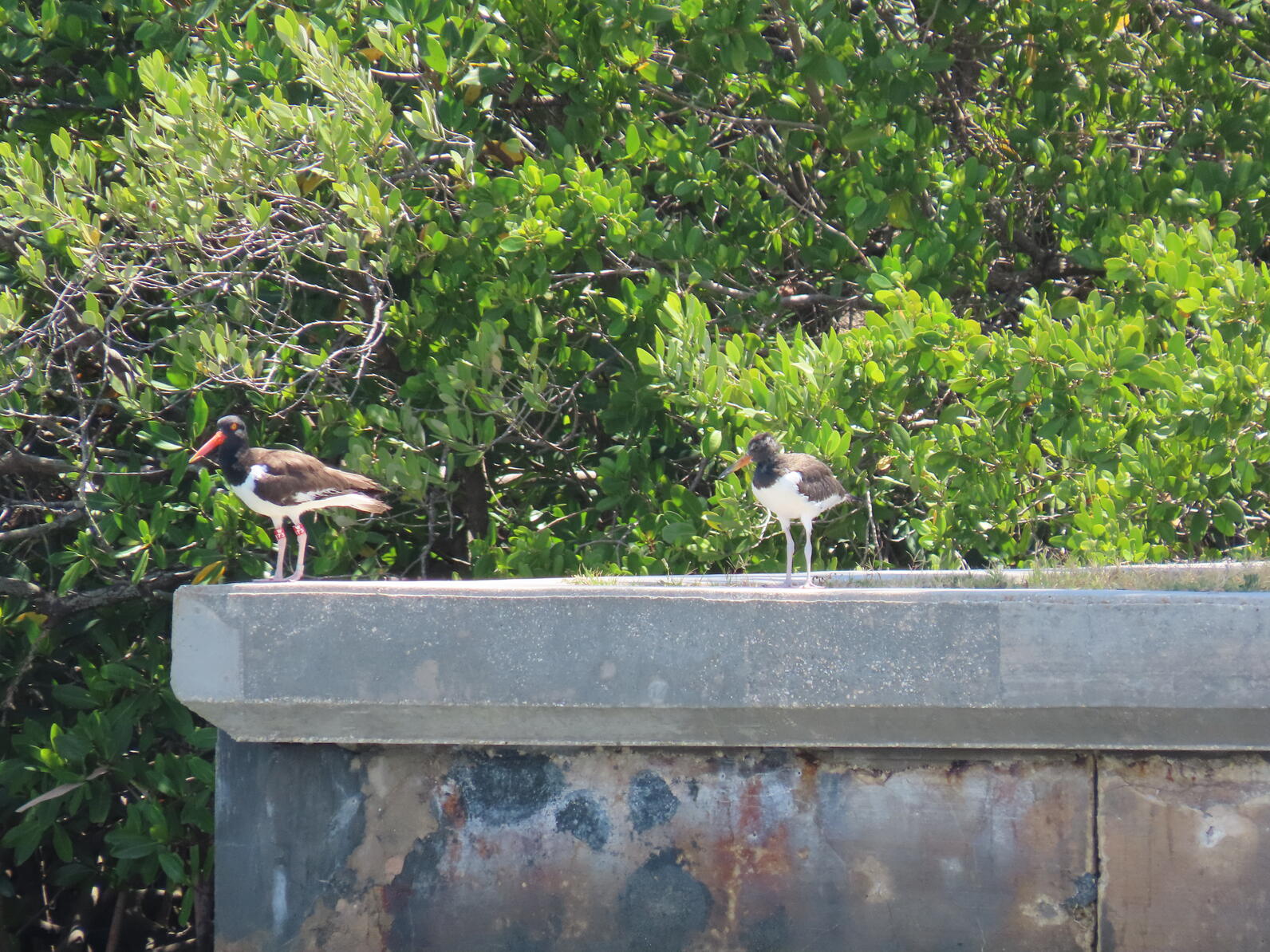In mid-March — just as breeding season was kicking off — Audubon Florida staff in the St. Petersburg region worked with Florida Fish and Wildlife Research Institute (FWRI) to band American Oystercatchers that nest on rooftops in Pinellas County. American Oystercatchers, a state-designated Threatened species, are declining as a result of both habitat loss and human disturbance. In Pinellas County, we have started to see a shift in oystercatchers nesting on the ground to nesting on gravel rooftops due to a lack of suitable ground nesting habitat where they could successfully raise their young. Banding American Oystercatchers that nest on rooftops will help us better understand movement patterns, site fidelity, survival, and how they are contributing to population recovery.
Audubon Florida’s rooftop biologist, Kara Cook, scouted out oystercatchers that started showing up on previously known nesting sites to find pairs that would be suitable for banding. The ideal time to band oystercatchers is as soon as they show up at their territory, but before they lay eggs. Federally permitted researchers catch them for banding by using a carpet net, decoys, and audio playback in an area we think that they might be ready to defend their territories. Once caught, they are removed from the net, measurements and weights are taken, bands are added to their legs, and then they are released. The whole banding process takes less than five minutes to reduce the time the birds are in-hand.
Audubon and FWRI staff banded two rooftop nesting pairs. Now that the oystercatchers are banded anyone can report their sighting of a banded oystercatcher to the American Oystercatcher Working Group. All that is needed is a confirmed sighting of the band code and location of where it was seen. Thanks to reports of band sightings by community scientists, we are learning more about their flight patterns and postnesting behavior. As of mid-June, three chicks fledged from the two recently banded adult pairs.

American Oystercatchers Choose St. Petersburg-area Airport for Nesting Site
Audubon coastal biologist Jeff Liechty couldn’t help feeling nervous for the American Oystercatcher pair that chose to nest at the Albert Whitted Airport in St. Petersburg this season. Their diminutive size and tendency to spook made the pair strange bedfellows with the airplanes coming and going from the runways, but it is the presence of the planes — and predator control — that has made this site a successful fledging area for American Oystercatchers.
There are very few nest sites in Pinellas County where American Oystercatchers can nest undisturbed by recreation or other human activity. This site is closed to public access for safety concerns, and is in proximity to food in the bay. “The habitat isn’t traditionally something that the oystercatchers would have chosen for their nest,” Liechty explains, “but they have few options here and it meets the few criteria that this flexible species needs: no mammalian predators, no human disturbance, food nearby, open sightlines, gravelly/sandy substrate.”
Luckily, the birds are far enough from the flight path that they are not a concern for the airport; in fact, the grounds crew made sure the nesting birds remained undisturbed. American Oystercatchers have fledged chicks from this site successfully, and we hope the trend continues this year.
Lack of Disturbance Due to COVID Restrictions Yields Banner Year for Chicks at Shell Key Preserve
Pinellas County closed Shell Key Preserve at the onset of the COVID-19 pandemic, preventing personal watercraft from landing and people from using the beach. Even when the beaches re-opened, the tour boats and shuttles ran on a limited schedule, and visitation remained lower than in previous years. Three pairs of American Oystercatchers nested in 2020, and two pairs fledged a total of five chicks. In fact, every egg hatched led to a fledged chick, an unheard of success rate! All five were banded in partnership with the Florida Fish and Wildlife Conservation Commission as well as Pinellas County.
This year was confirmation: Protecting beachnesting birds like American Oystercatchers from disturbance makes all the difference between chicks surviving or dying on Florida’s beaches.
Report a Sighting: FL.Audubon.org/birds/banded-birds




